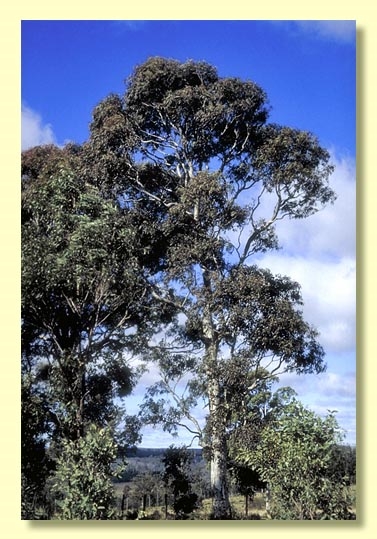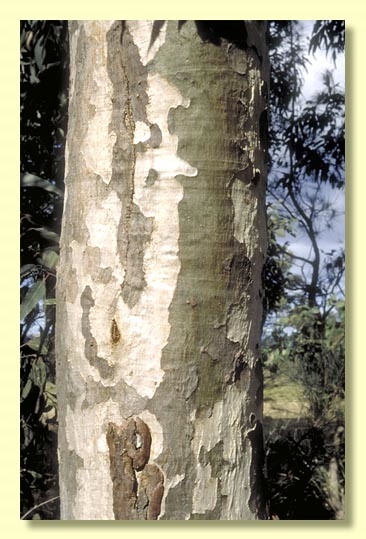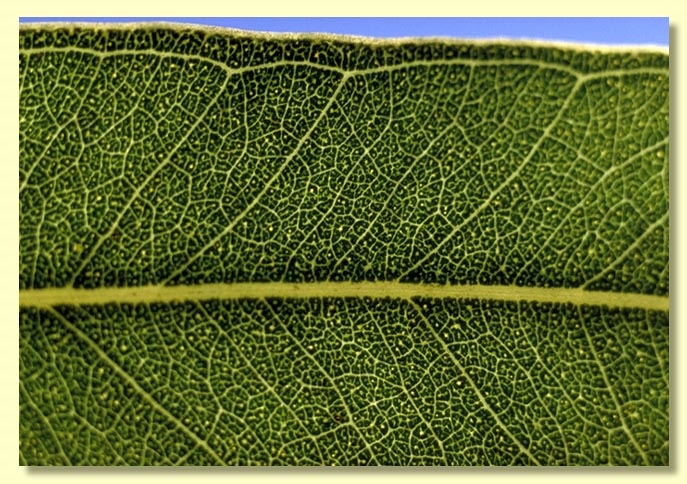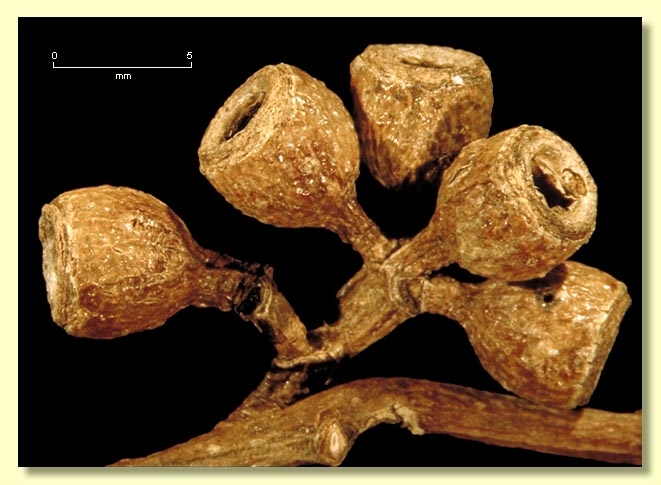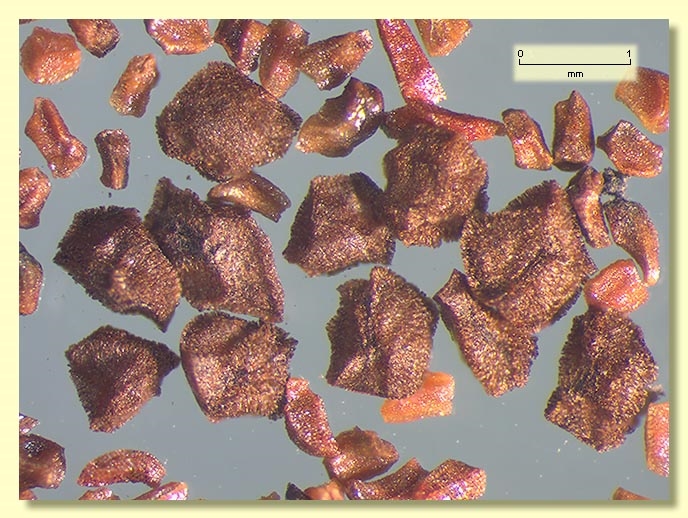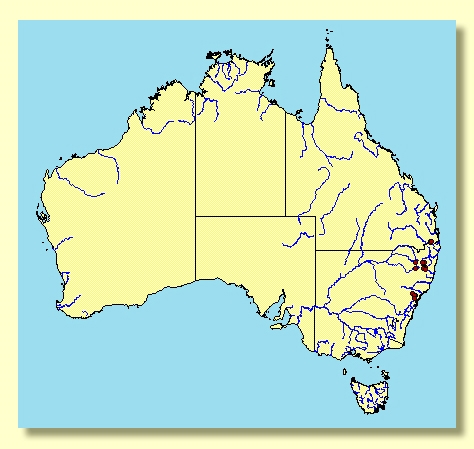Euclid - Online edition
Eucalyptus michaeliana
Eucalyptus | Symphyomyrtus | Racemus
T: Hillgrove and Enmore, NSW, Mar. 1907, J.F.Campbell s.n.; (holo: NSW312971).
Bark smooth, mottled grey to blue-grey and white, cream, yellow, or pink.
Juvenile growth (coppice or field seedlings to 50 cm): stems square or rounded in cross-section; juvenile leaves always petiolate, opposite for ca 7 nodes, then sub-opposite or alternate, lanceolate to broadly lanceolate, 5–15 cm long, 1.2–5.5 cm wide, base rounded to tapering, concolorous, dull, green.
Adult leaves alternate, petiole 1.5–3 cm long; blade lanceolate to falcate, 9–18 cm long, 1–2.3 cm wide, base tapering to petiole, concolorous, dull, green to grey-green, side-veins greater than 45° to midrib, densely reticulate, intramarginal vein parallel to and remote from margin, oil glands small, island, intersectional or obscure.
Inflorescence axillary compound usually of 3 to 5 separate umbels, peduncles 0.3–0.5 cm long, buds 3 or 7, pedicellate (pedicels 0.2–0.5 cm long). Mature buds oblong (0.5–0.6 cm long, 0.3–0.4 cm wide), yellow, scar present, operculum conical to rounded, stamens irregularly flexed, anthers cuboid to oblong, versatile, dorsifixed, dehiscing by longitudinal slits (non-confluent), style long, stigma blunt, locules 3 or 4, the placentae each with 4–8 vertical ovule rows. Flowers white.
Fruit pedicellate (0.1–0.3 cm long), cup-shaped or barrel-shaped, 0.3–0.5 cm long, 0.4–0.6 cm wide, disc level, valves 3 or 4, near rim level or enclosed.
Seeds brown, ca 1.0 mm long, obscurely pyramidal, angular, edge slightly toothed, dorsal surface smooth, hilum ventral.
Cultivated seedlings (measured at ca node 10): cotyledons bilobed to oblong; stems rounded or square in cross-section; leaves always petiolate, opposite to slightly disjunct for many nodes, lanceolate, 2–8 cm long, 1–3 cm wide, base tapering, margin entire, apex pointed, strongly discolorous, darker green above, paler beneath.
Flowering has been recorded in March.
E. michaeliana is occasionally grown as an ornamental.
A small to medium-sized tree of disjunct distribution, occurring between Cessnock and Wiseman's Ferry on the Central Coast and around Hillgrove and Enmore on the eastern Northern Tablelands of New South Wales, and just north of the Queensland border near Mt Ballon and the Macpherson Range. The bark is smooth and mottled, yellow and greenish, coming off in small flakes unlike the bark of red gums which sheds in large slabs. It is related to no other eucalypt and is distinguished by the inflorescences which are compound and axillary, a very rare type in eucalypts. The buds occur in three or rarely five clusters but may be crowded on the axis obscuring the pattern. Buds and fruit are small.
Eucalyptus michaeliana belongs in Eucalyptus subgenus Symphyomyrtus because buds have two opercula and ovules are in four to eight rows. Within this subgenus E. michaeliana is somewhat isolated as the only species in section Racemus by the combination of its unusual compound axillary inflorescence, smooth bark, concolorous leaves, bilobed to oblong cotyledons and obscurely pyramidal, angular seeds.

